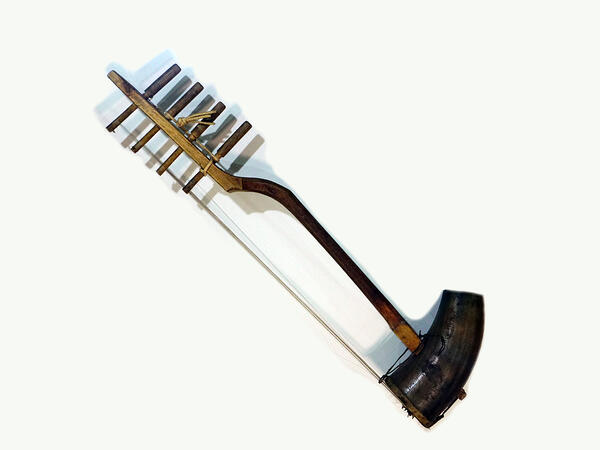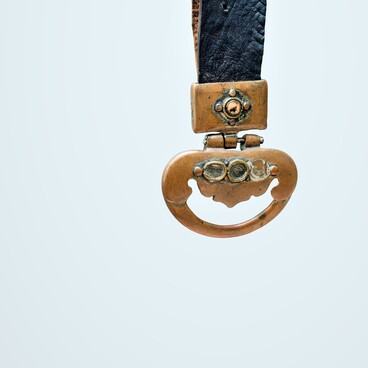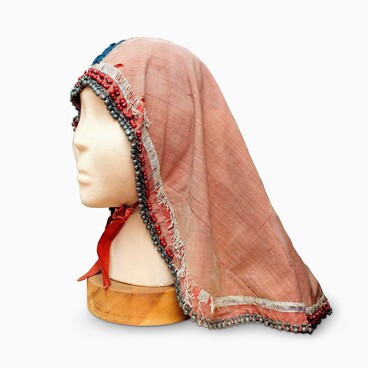Tuvans to this day have preserved many features of ethnic traditional culture, including musical culture. Folk music glorified hard life, nomadic life, and nature: mountains and rivers, tracts and sacred springs (arjaans), domestic and wild animals.
One of the main Tuvan musical instruments is the four-stringed bowed byzaanchy (pysanchi). Under different names, such instruments are found in almost every country in the Far East. They differ from each other in size, the number of strings (there are two strings), as well as the material of which the body is made: wood, bamboo, or copper. The byzaanchy is similar in structure to the ancient Chinese erhu fiddle.
The musical instrument of Tuvans consists of two parts — the body and the neck, which go through it and ends with a decorative carved figure of a horse’s head. Byzaanchy strings are made of untwisted horsehair and stretched on four pins at the base of the neck. The finished body is covered with a deck and it resonates as it is played. It is traditionally made of goat, calf, maral, or fish skin.
The first and third strings of the byzaanchy are tuned in unison, the second and fourth strings in a quint (or less frequently a quart) above the first and third, also in unison. All four strings are threaded through a metal ring, tied to the neck with a rope or leather binder. The rope moves freely up and down the neck and can lengthen or shorten the sounding part of all strings at the same time.
When playing, the performer’s fingers are under the strings. The musician sets the byzaanchy upright, the lower end of the neck resting on the left knee. With the thumb of the left hand, they support the instrument, and with the rest of them they move slightly down the strings, not pressing them to the neck. The bow is in the right hand. When the bow contacts the strings, the instrument makes squeaky sounds, softer in timbre than the European violin.
Byzaanchy chi is common in Kazakhstan, Buryatia, Mongolia, and Tuva. Tuvan national bowed instruments are part of the original musical culture, and their manufacture is classified as a folk craft and arts and crafts.
One of the main Tuvan musical instruments is the four-stringed bowed byzaanchy (pysanchi). Under different names, such instruments are found in almost every country in the Far East. They differ from each other in size, the number of strings (there are two strings), as well as the material of which the body is made: wood, bamboo, or copper. The byzaanchy is similar in structure to the ancient Chinese erhu fiddle.
The musical instrument of Tuvans consists of two parts — the body and the neck, which go through it and ends with a decorative carved figure of a horse’s head. Byzaanchy strings are made of untwisted horsehair and stretched on four pins at the base of the neck. The finished body is covered with a deck and it resonates as it is played. It is traditionally made of goat, calf, maral, or fish skin.
The first and third strings of the byzaanchy are tuned in unison, the second and fourth strings in a quint (or less frequently a quart) above the first and third, also in unison. All four strings are threaded through a metal ring, tied to the neck with a rope or leather binder. The rope moves freely up and down the neck and can lengthen or shorten the sounding part of all strings at the same time.
When playing, the performer’s fingers are under the strings. The musician sets the byzaanchy upright, the lower end of the neck resting on the left knee. With the thumb of the left hand, they support the instrument, and with the rest of them they move slightly down the strings, not pressing them to the neck. The bow is in the right hand. When the bow contacts the strings, the instrument makes squeaky sounds, softer in timbre than the European violin.
Byzaanchy chi is common in Kazakhstan, Buryatia, Mongolia, and Tuva. Tuvan national bowed instruments are part of the original musical culture, and their manufacture is classified as a folk craft and arts and crafts.


